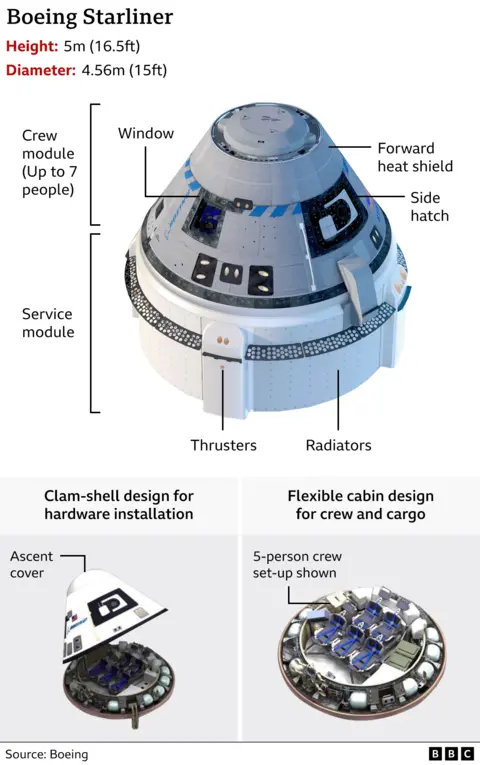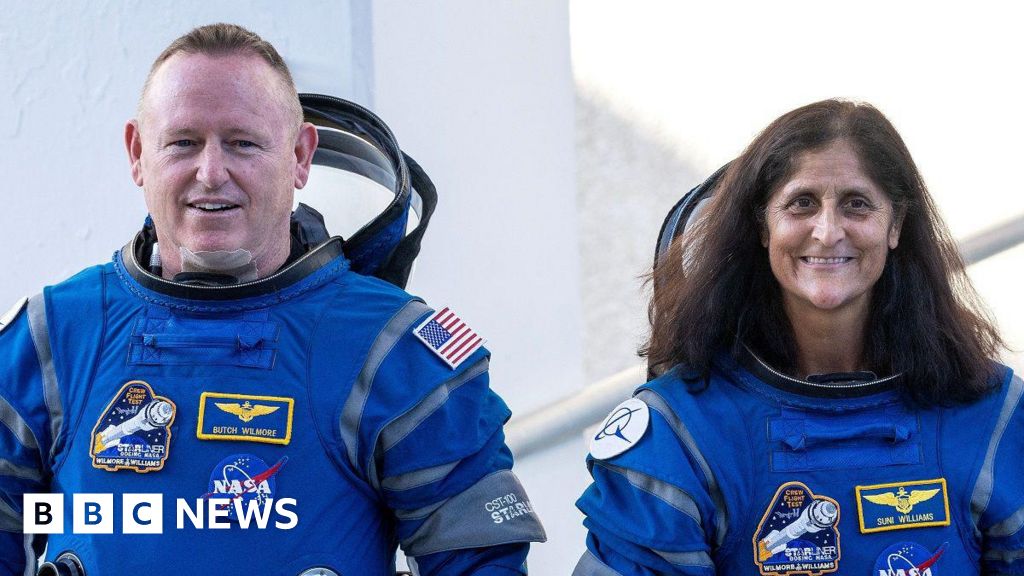 EPA
EPAWhen two American astronauts launched on a test mission to the International Space Station on June 5, they expected to be back home within a few days.
But things didn’t quite go according to plan.
In fact, almost two months later, Barry “Butch” Wilmore and Sunita Williams are still there, floating high above the earth.
The couple, stranded indefinitely, now face the sudden prospect of missing the summer entirely and even spending Christmas and New Years in space.
Wilmore, 61, and Williams, 58, flew to the station on a Boeing Starliner spacecraft. It was the first flight of its kind with humans on board and a test to evaluate the performance of the new spacecraft before it is used more regularly.
However, problems arose during the approach, including leaks in the propulsion system and the shutdown of some engines.
Although they have made it safely to the space station, they will need an alternative means of transportation to return home in case the Starliner’s return to Earth is deemed unsafe.
At a press conference on Wednesday, NASA officials said no firm decisions had been made regarding next steps.
“Our first choice is to bring Butch and Suni back on Starliner,” said Steve Stich, NASA’s Commercial Crew Program manager. “However, we have done the necessary planning to ensure that we have other options open to us.”

One possible option being considered would be to assign the two astronauts to a mission scheduled to launch in September and to return them to Earth on that mission in February 2025.
The flight to the space station will be carried out on a SpaceX Crew Dragon spacecraft. It was originally planned that four crew members would be on board, but two of the seats could remain empty if necessary.
This plan would mean that astronauts would spend more than eight months – instead of just eight days – on board the International Space Station (ISS).
When the Crew Dragon is deployed, the Starliner spacecraft would return to Earth uncrewed and under computer control.
NASA officials said it could take a week or more to make a final decision.
Ken Bowersox, NASA’s director of space operations, told reporters the chances of an unmanned return of the Starliner have “increased a little bit, based on what’s been going on over the last week or two.”
“That’s why we’re looking at this option more closely to make sure we can handle it,” he said.
Using a SpaceX spacecraft to return the astronauts would be a blow to Boeing, which has been trying for years to compete with the company and its more experienced Crew Dragon.
Earlier this week, NASA used a SpaceX rocket to deliver additional food and supplies to the ISS, including additional clothing for the two astronauts.
Last month, the pair said in a brief press conference that they were “absolutely confident” about the return trip and that Starliner was “really impressive.”
For Ms. Williams, a retired Navy helicopter pilot, this is her third stay aboard the ISS, while Mr. Wilmore is a former fighter jet pilot who has already been in space twice.
“We had a lot to do up here and were immediately integrated into the team,” Ms. Williams said recently in a conference call with reporters.
“It feels like coming home. It’s a nice feeling to be floating around. It’s a nice feeling to be in space and working up here with the International Space Station team,” she said. “So yeah, it’s great to be up here.”
Boeing hoped that the Starliner’s maiden mission would pave the way for regular use of its capsule for flights to and from the station. The Space X Crew Dragon has been approved for NASA missions since 2020.
Although the astronauts will spend much more time in space than originally planned, other astronauts have already spent much longer periods above the Earth’s surface. The Russian Valery Polyakov spent 437 days in space aboard the Mir space station in the mid-1990s.
Last year, Frank Rubio returned from the ISS after 371 days, the longest time an American has spent in space.
And Russian Oleg Kononenko, who is also currently on board the ISS, is the first person to spend more than 1,000 days in space during his career.
In their briefings and interviews, the two Americans expressed optimism about their situation. “I’m not complaining about being here a few more weeks,” Ms. Williams said last month.
As things stand, the couple could stay there for many more weeks.


